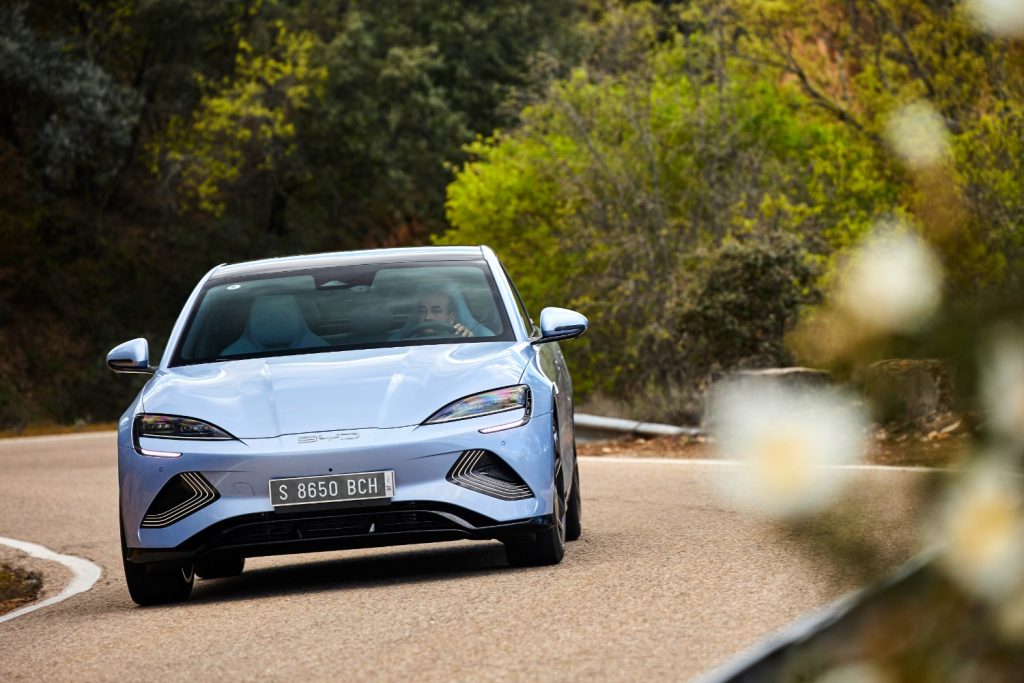If Chinese manufacturers are increasingly determined to succeed in the European market, and Portugal is no exception, in our country, BYD has been one of the most active brands among those originating from the nation that produces and sells the most cars worldwide. Proof of this is the arrival in the national market – after the flagship Han, the large SUV Tang, the compact SUV Atto 3, and the utility SUV Dolphin (you can read the full review of its most equipped version here) – of the new Seal, a D-segment sedan or midsize family car, which was presented to the Portuguese press today. This is further proof that the ambitions of the leading global manufacturer in the production and sale of 100% electric and plug-in hybrid cars are to be taken (very) seriously.
This is also the proposal that best illustrates BYD’s intention to position itself as an “affordable premium” brand. In other words, characterized by offering quality and technologically advanced products, but where commercial competitiveness is not synonymous with compromises in key areas – in other words, where price is not everything, or where anything goes to have a good price…
The first clear sign of this is evident as soon as the eyes rest for the first time on the Seal (seal), the second European model, after the Dolphin (dolphin), from the BYD Ocean series, created from the Ocean Aesthetics design language, inspired by the oceans and marine animals. Marketing theories aside, the fact is that its exterior appearance has little or nothing to do with what many still imagine Chinese cars to be, standing out for its fluid and elegant lines, which give it an unmistakably elegant, distinctive, and sporty appearance.
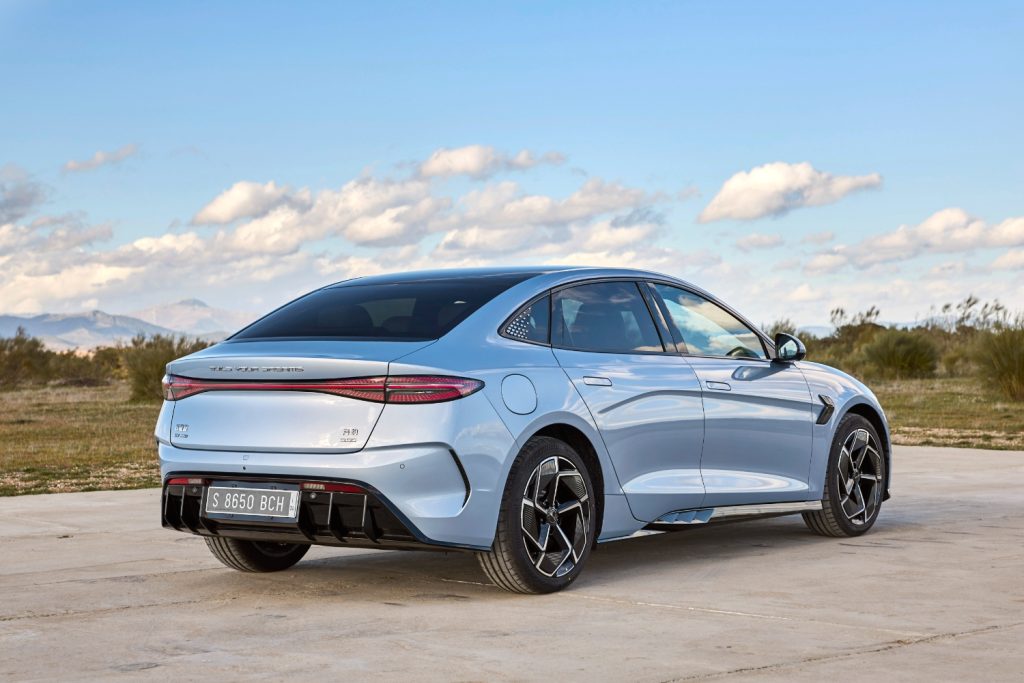
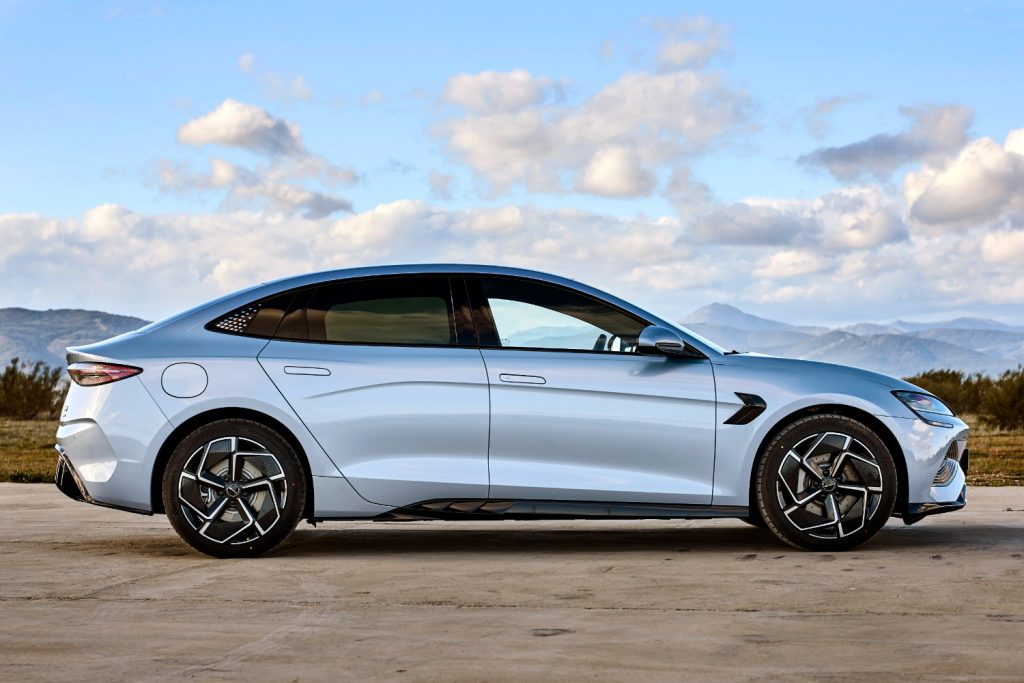
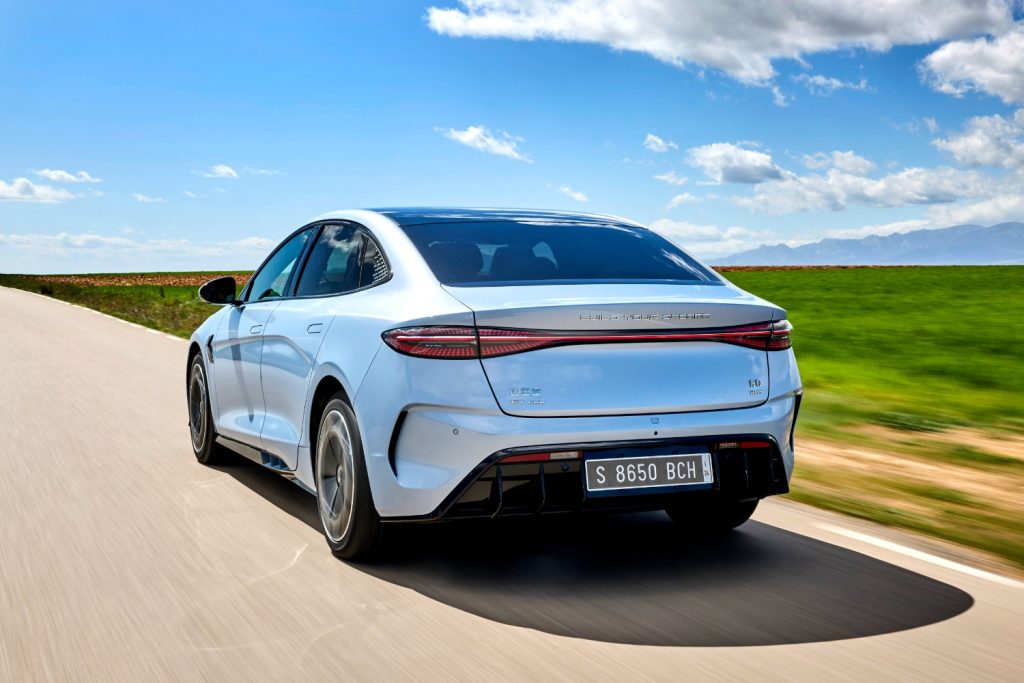

In this regard, where images will continue to speak louder than a thousand words, what best illustrates the good work carried out by the team led by Wolfgang Egger (former head of design at Alfa Romeo, Audi, and Lamborghini), in these three four-door volumes, with a length of 4.8 m, is the statement that, with a different emblem on the hood, from a brand with a different history, tradition, and reputation, there would be many who would doubt that this is a product from China… What is certain is that there are also merits to the exterior lines in terms of efficiency, particularly aerodynamics, as evidenced by a Cx of just 0.219.
Pleasant surprise
No less surprising, on the contrary, are the attributes of the Seal’s interior. Most of the plastics used exhibit a high level of quality, as do the respective finishes, and there are even applications and coverings in finer materials, which, together with a sober, discreet, but elegant decoration, contribute greatly to a very cozy interior environment. At the same time, the habitability is quite generous, and storage space has not been forgotten either, with the trunk offering 400 liters of capacity, to which, in the front-wheel-drive version, and with only one engine, a “frunk” (the space under the front hood) with 53 liters is added.
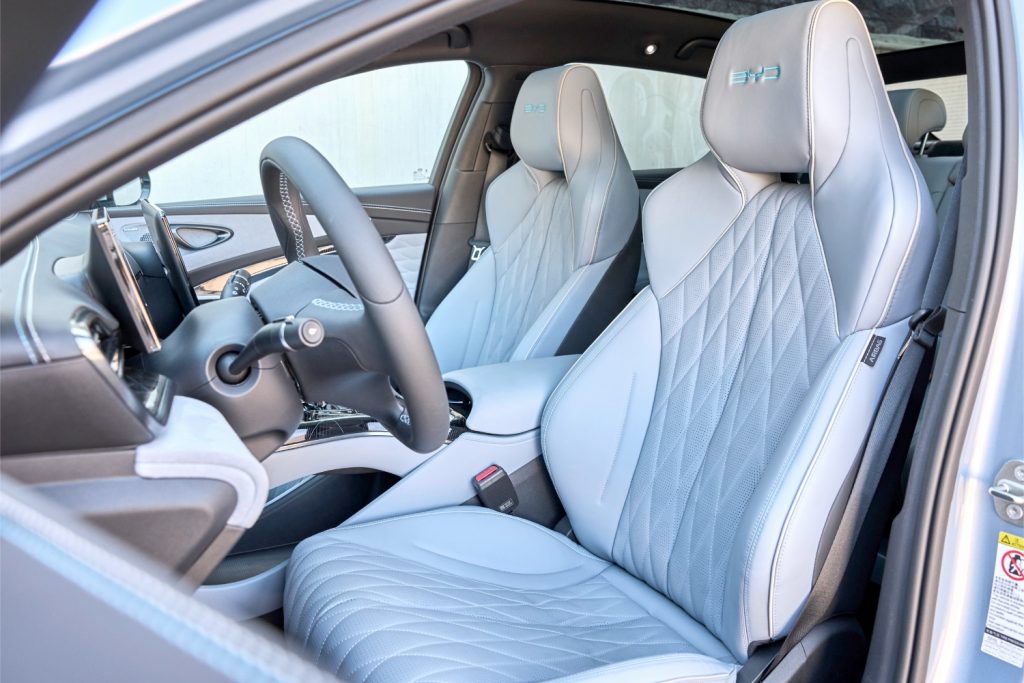
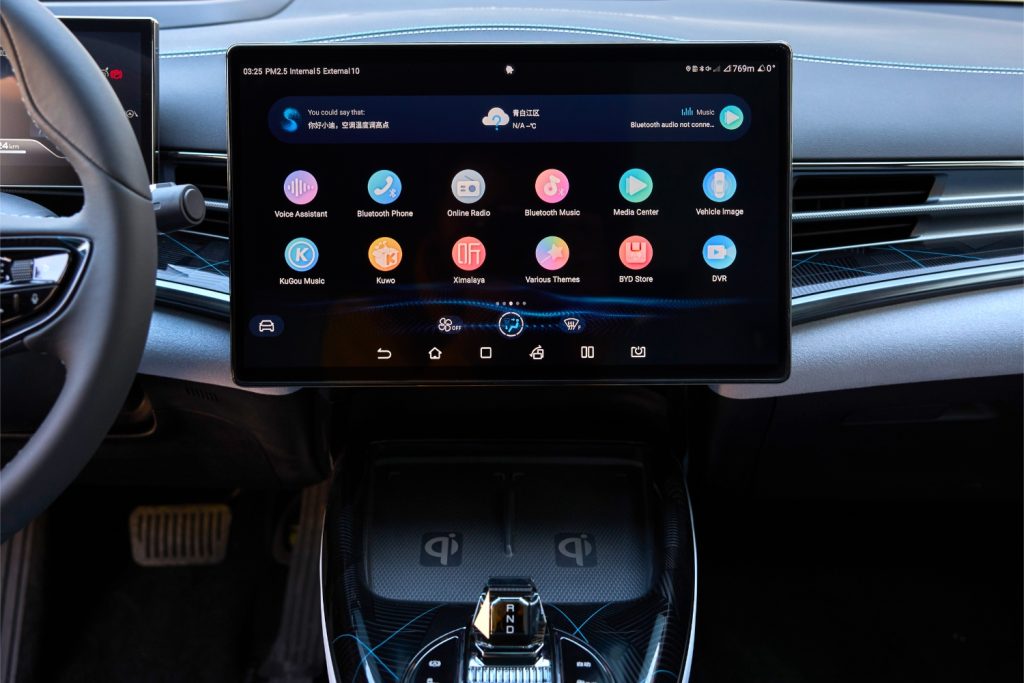
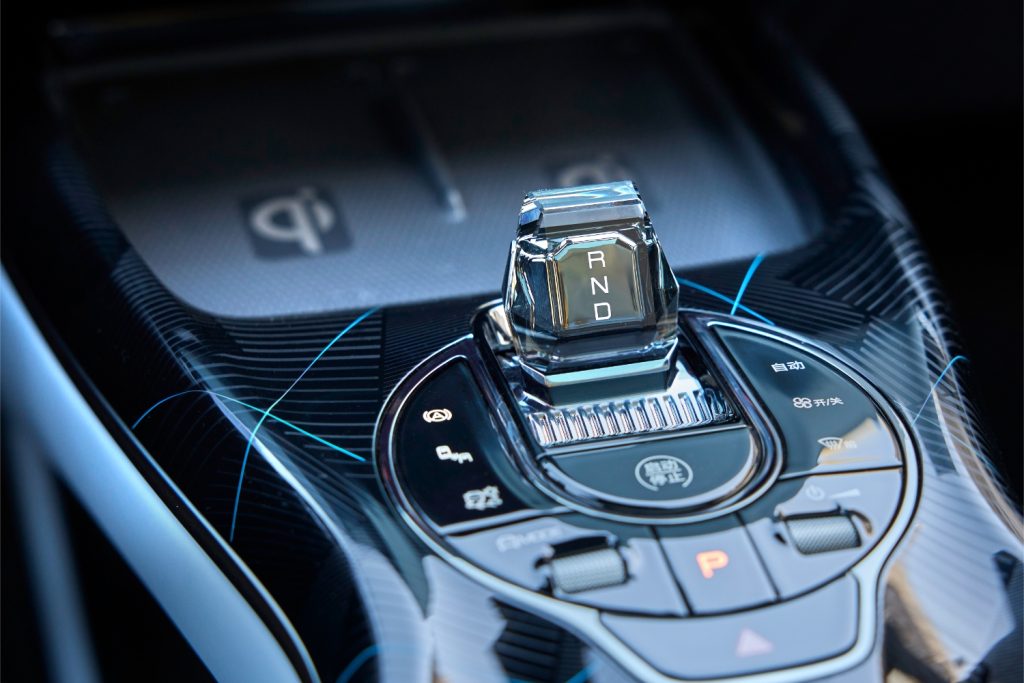
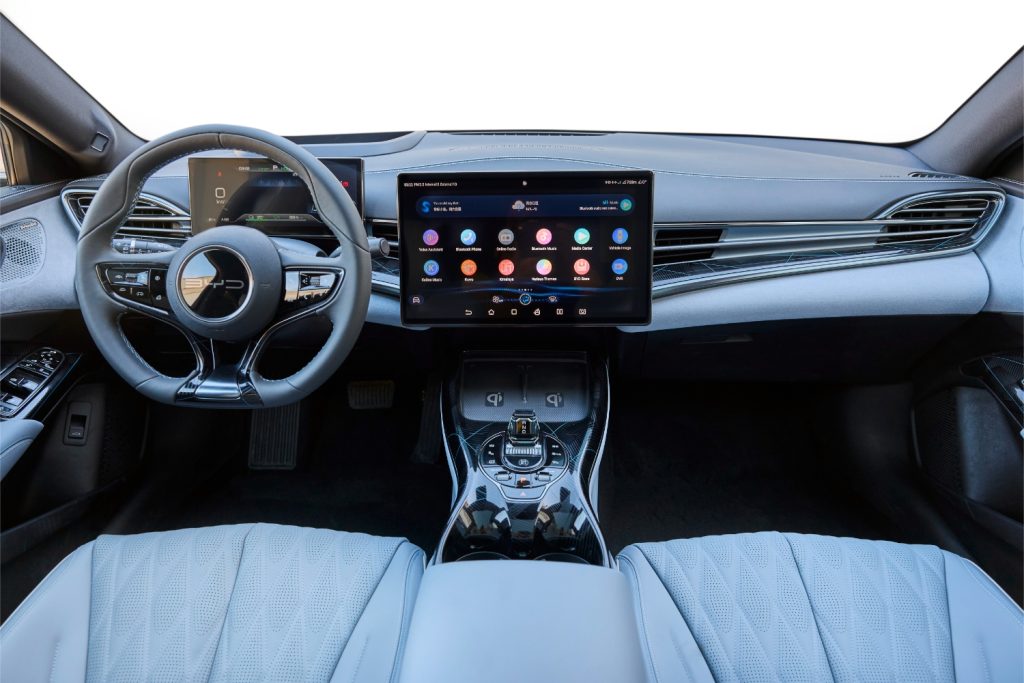
As expected, technology is also abundant on board. Not only is a very complete set of advanced driving assistance systems standard, but also the Dynaudio sound system with twelve speakers, and a very advanced and complete infotainment system, controlled through a rotating screen (already a hallmark of BYD models, switching between horizontal and vertical positions with a simple press of a button) with 15.6″, complemented by the digital instrument panel controlled by a 10.25″ LCD.
As for the mechanics, it is important to underline that the Seal is based, like its range siblings, on the e.platform 3.0, a specific platform purposely created for electric propulsion cars. One of its main attributes is the Cell-to-Body (CTB) technology, in which the battery is an integral part of the chassis, which brings important advantages not only in terms of safety (particularly in the event of a collision) but also in terms of structural rigidity (in the Seal, the torsional rigidity is an illustrative 40,500 Nm/°), which will also bring its benefits in terms of dynamics, as will be proven later on.
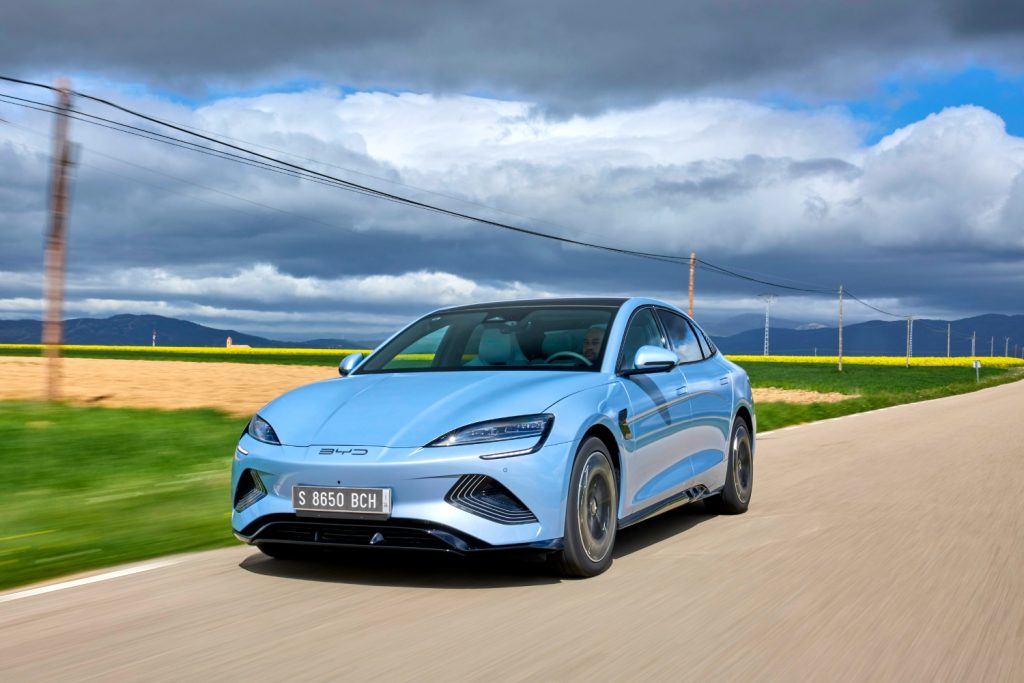
Regarding the lithium-ion battery, which has lithium iron phosphate (LFP) as the cathode material, it is obviously the famous Blade Battery, with blade-shaped cells, rather than cylindrical ones, a solution that allows it to be more compact, thus optimizing both habitability and trunk capacity, as well as weight distribution between the two axles and the center of gravity. With a capacity of 82.5 kWh, it accepts fast charging up to 150 kW, allowing it to recover from 30-80% of the charge in just 26 minutes.

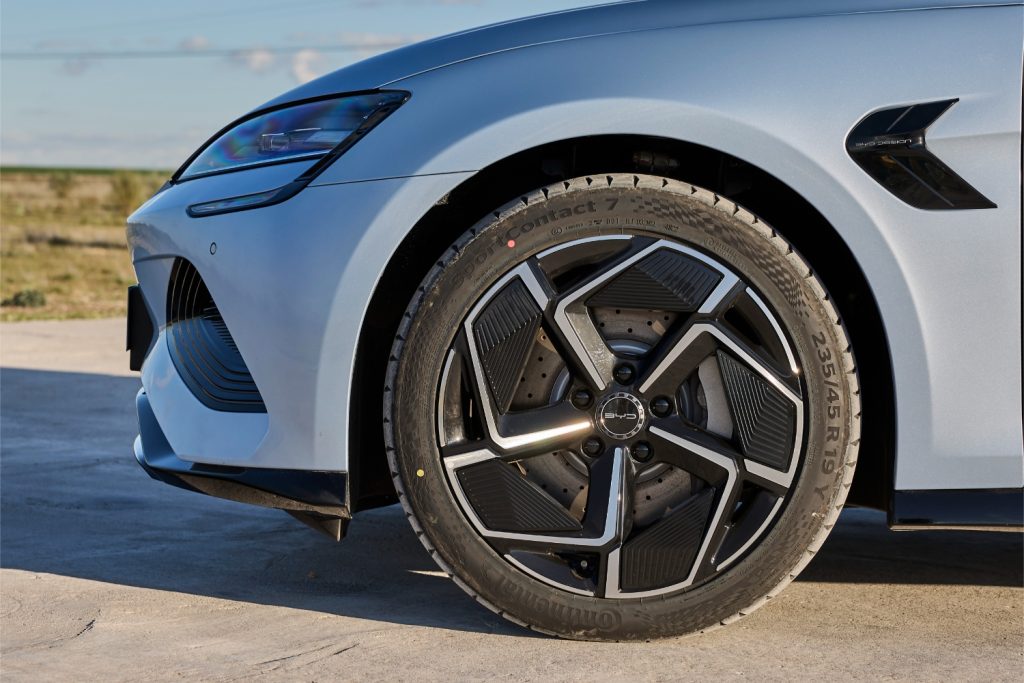
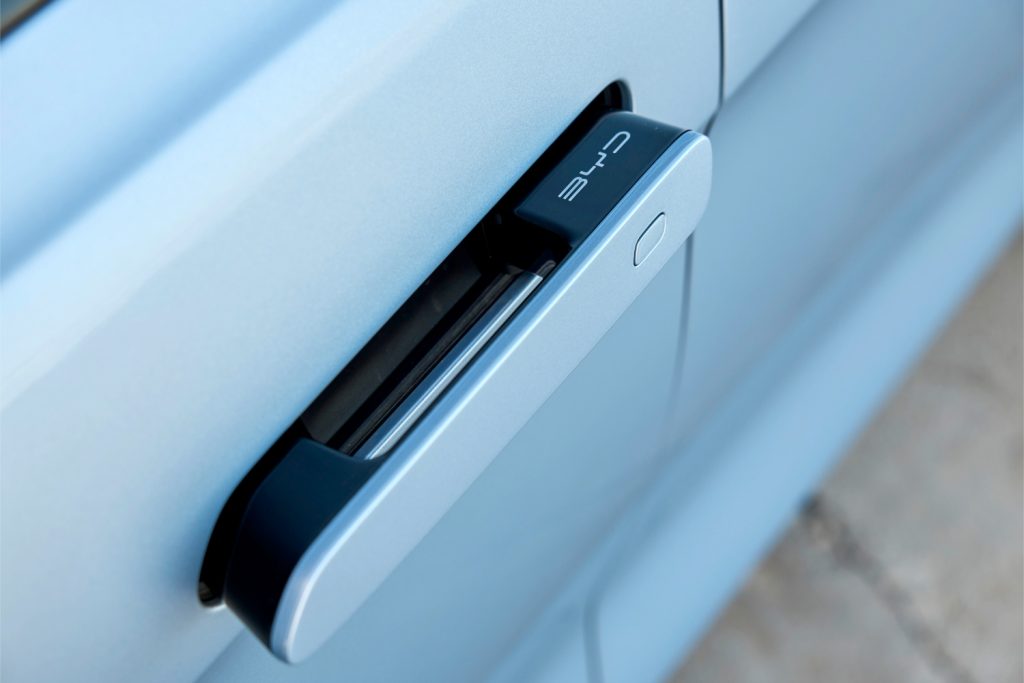
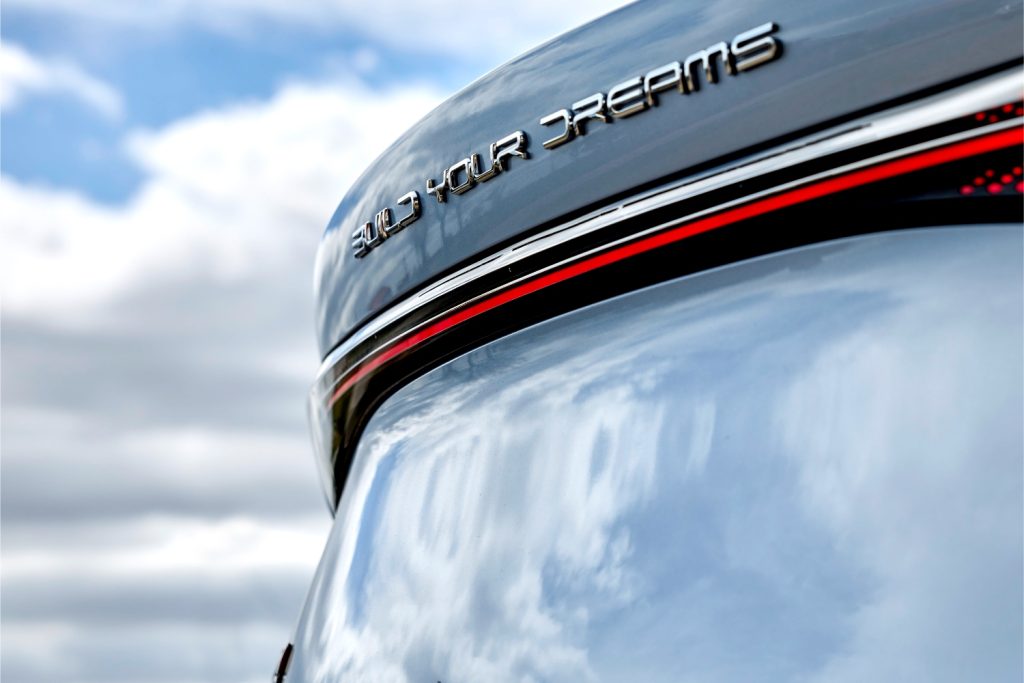
In this commercial launch, the Seal will be offered in two versions, which differ from each other by their mechanics. In the more affordable Seal Design, with rear-wheel drive, the 313 hp engine allows for a 0-100 km/h acceleration in 5.9 seconds, with a maximum speed limited to 180 km/h, and a WLTP cycle range of 570 km. On the other hand, in the Seal Excellence, the same rear engine is complemented by a front engine with 271 hp, which guarantees all-wheel drive and a combined output of 530 hp, enough to achieve 0-100 km/h in 3.8 seconds (the maximum speed of 180 km/h remains unchanged), with a range of 520 km in this case.
Good impressions
If we believe in the saying that there is no second chance to make a good first impression, we must recognize that the Seal exceeded expectations in the first dynamic contact that BYD provided to Portuguese journalists with its latest release. In an experience that had to be, naturally, short (soon, a complete review of the model here on AutoGear), behind the wheel of the most equipped version of the range, the first compliments go to the very correct and engaging driving position, with emphasis on the front seats with a sporty appearance and appreciable lateral support (as is customary for the brand’s models), in this case equipped, as standard, with eight-way electric adjustments.
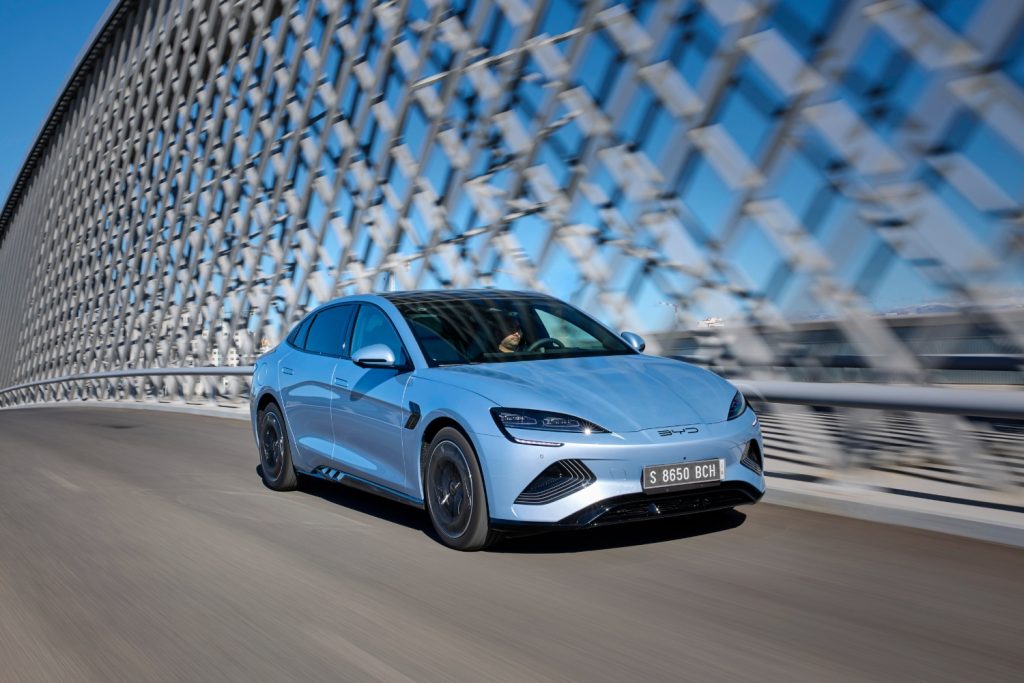
The first kilometers were driven in Eco driving mode (there are also Normal, Sport, and Snow modes), in a calm manner, ideal for appreciating the always ready and intense, but linear, response to the accelerator, and the almost absolute silence on board, to which the good sound insulation of the cabin and the solid assembly contribute, resulting in the absence of parasitic noises, even on poorly maintained roads – those that best demonstrate the competence of the electronically controlled damping suspension (an exclusive feature of the BYD Excellence) in absorbing irregularities and explaining the high level of ride comfort.
The opportunity could not be missed to also briefly experience the Sport mode, in which the response to the demands of the right pedal is even faster and more substantial, evident in the rapid way the Seal Excellence gains speed, whether in accelerations or from a standstill position. The winding roads of the Sintra Mountains also allowed for confirming the solid and confident handling, good directional stability, and a very balanced attitude in corners, with well-tuned steering, controlled through a steering wheel that is beyond reproach in terms of dimensions and grip, allowing for precise entry into the desired trajectory, with the front end also seeming to excel in terms of speed and precision. All these are first impressions to be confirmed very soon in a complete review.
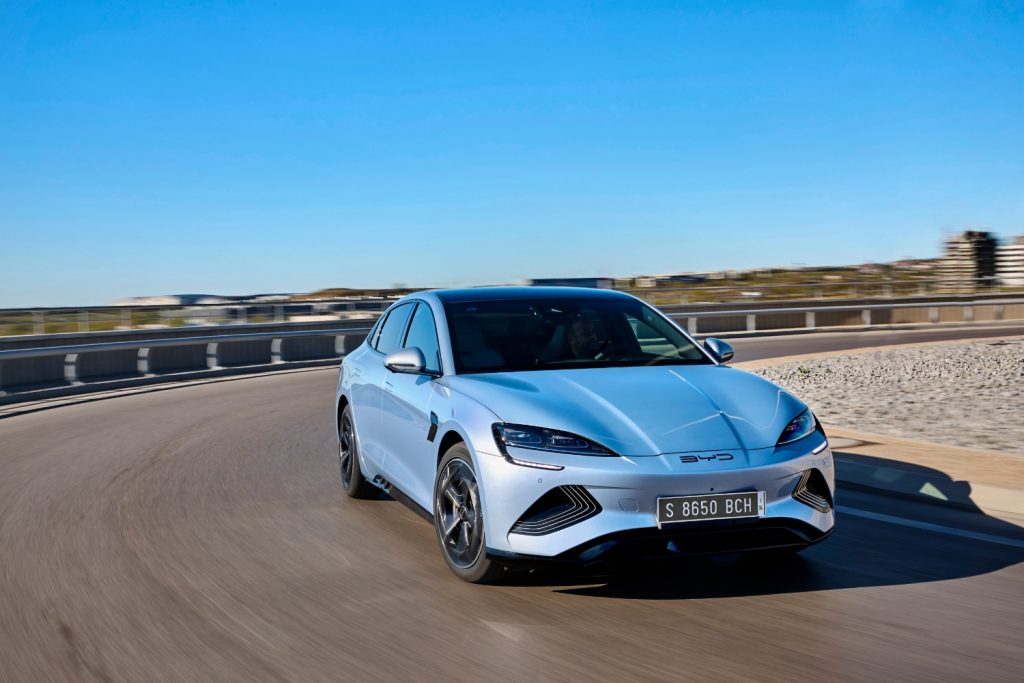

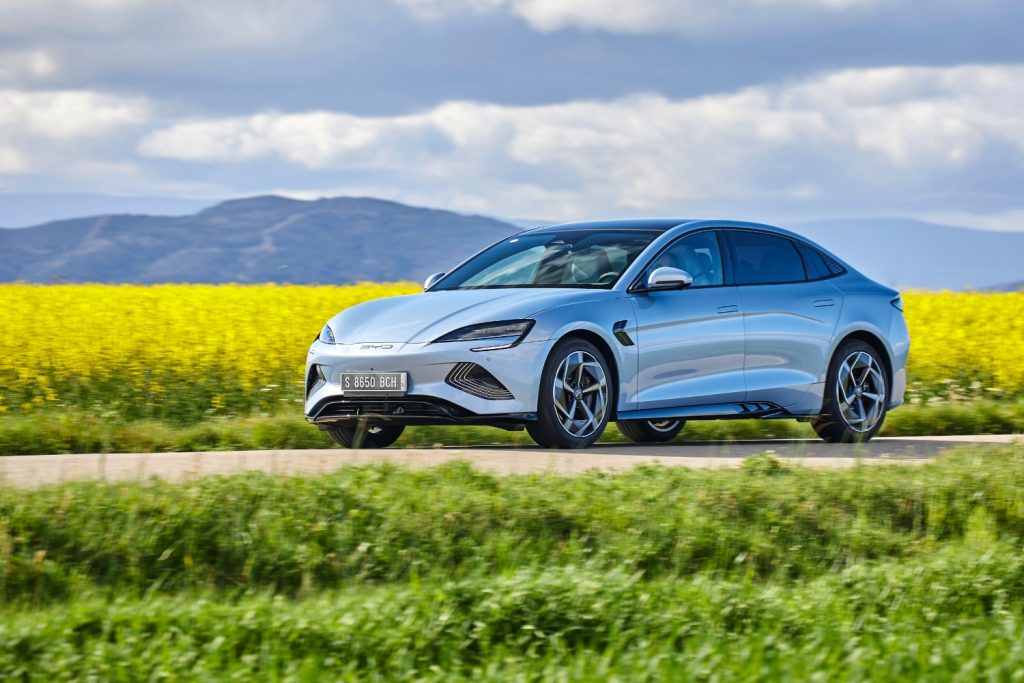

As already mentioned, BYD does not intend to be, in any way, a “low-cost” brand, where price is everything, but it also does not give up on a competitive commercial positioning. In this case, and always including a very complete standard equipment, the Seal Design is offered in Portugal starting at €46,990; for €47,990, you can access the Seal Excellence, where the additional one thousand euros of investment are fully compensated, among other things, by the additional 217 hp, all-wheel drive, and active suspension.
And if there were any doubts about BYD’s ambitions for the Portuguese market, just look at its schedule of novelties for 2024. In March, two more affordable versions of the Dolphin will arrive; the update of the Tang and the new Seal U, the SUV variant of the Seal (offered not only in 100% electric versions but also in a plug-in hybrid variant, the brand’s first proposal of this kind in Europe) are scheduled for the beginning of summer; and the launch of the Seal Y, yet to be revealed, is planned for later in the year.
